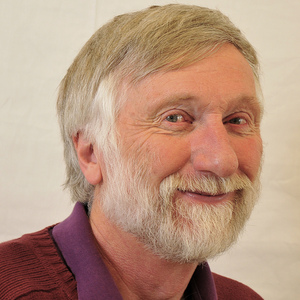Breadcrumb
Distinguished Speaker Seminar
2pm Speaker: Professor Mike Steel, Director of the Biomathematics Research Centre at University of Canterbury, Christchurch, New Zealand
Title: From evolutionary trees to networks and back again
Abstract: Phylogenetic networks can provide a more complete description of evolutionary history than trees, by allowing reticulate events such as hybridization and lateral gene transfer. In the first part of this talk, we explore the question: ‘when is a phylogenetic network merely a tree with additional links between its edges?’ It turns out that the class of ‘tree-based’ networks can be efficiently characterized. More recent results on this question have followed, motivated by Dilworth’s theorem (for posets), and matching theory in bipartite graphs. This allows for fast algorithms to determine when a network is tree-based and, if not, to calculate how ‘close’ to tree-based it is. In the second part of the talk, we model lateral gene transfer by a simple stochastic process on trees. By connecting this process to a simple random walk on a graph it is possible to analyze the extent to which an underlying species tree T can be inferred from sampled gene trees that have undergone random transfers on T.
3pm Speaker: Professor David Aldous, University of California, Berkeley Title: Scattered thoughts from applied probability: networks, security queues and prediction tournaments
Title: Scattered thoughts from applied probability: networks, security queues and prediction tournaments
Abstract: A sample of topics that have caught my eye in recent years.
(a) Prediction tournaments are like sports in that a higher-ranked player will likely score better than a lower-ranked one. But paradoxically, under a reasonable model the winner of a tournament is relatively less likely to be a top-ranked player, maybe clouding the interpretation of multimillion dollar IARPA-sponsored projects.
(b) At the back of a long queue at airport security, you stand still until a wave of motion reaches you; a non-standard model gives quantitative predictions for such waves.
c) Spatial networks give rise to intriguing questions. For instance, suppose (as a bizarre fantasy) that an eccentric multi-billionaire proposes to solve traffic congestion in a huge metropolitan region by digging underground tunnels through which cars can move very fast; where to dig the tunnels?
(d) As a hard technical question, epidemic models combine a model for a contact network with a model for transmission between contacts, with various parameters including an infectiousness parameter $\rho$. Intuitively, there is always a critical value $\rho_c$ such that, starting with a sprinkling of $o(n)$ infectives, there will w.h.p. be a pandemic if $\rho > \rho_c$ but w,h,p. not if $\rho < \rho_c$. This is true in familiar specific models for the contact network, but can we prove this for all contact networks?

